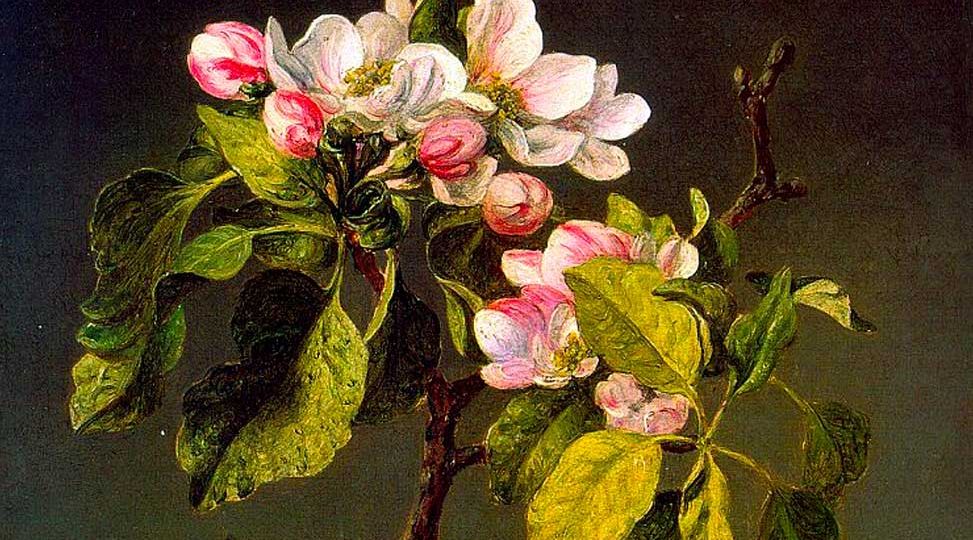

Jung (1921) defined each function specifically: Feeling is a valuation process driven by the ego (p. 425); Thinking “arranges the contents of ideation” (p. 482), implying that it orders our thoughts; Intuition “is the function that mediates perceptions in an unconscious way” (p. 453), meaning often we cannot explain where the thought came from; and Sensation “mediates the perception of a physical stimulus” (p. 461) by the body’s sense organs, whether caused by internal or external stimuli.
Although the order of functions was not a major focus of Jung (1921), he did contend that the first function, or primary function, has “absolute sovereignty” (p. 405). Further, the secondary function is “auxiliary or complementary” (p. 405) so, despite being important, does not have importance in its own right; it only acts to support the primary. Introverted feeling, for example, will pair with either extraverted sensing or intuiting, and extraverted feeling with either introverted sensing or intuiting. As Beebe (2005) pointed out, Jung’s writing had little mention of the third function since he thought the third and fourth function would remain unconscious in most people’s psyches. Jung highlighted this point, saying that the inferior or fourth function “lags behind in the process of differentiation” (p. 450). We now have a four-function model developed by Jung and further developed by Myers (1980) and others before being extended to the archetypal model developed by Beebe (2005). Jung commented that although “the four functions are somewhat like the four points of the compass; they are just as arbitrary and just as indispensable,” (p. 541), and he emphasized that he “would not for anything dispense with this compass on my psychological voyages of discovery” (p. 541). It follows then that if the Feeling function has been driven underground by society, our individuation compass will be offset.
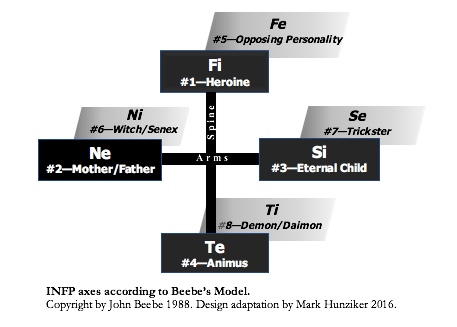
Marie-Louise von Franz (1971) said that “being forced to be an intellectual as a feeling type—feeling ‘thwarted or despised’” (p. 12)—is not uncommon. She contended that in such cases the auxiliary functions become over-developed as a means to compensate for the need to use the inferior function. Thus I developed my Te and Si to try to adapt to my incubating thinking environment at home and at school. This is why I disagreed with my analyst for many years and thought of myself perhaps as more extraverted. I am very comfortable socially, enjoying gathering information in the typically extraverted intuitive way—“in clusters, nothing stand[ing] by itself, discrete, and unconnected” (Haas & Hunziker, 2006, p. 54). I join dots, seeing the interconnection between groups of people and things, envisioning how “situations, objects, and information can be used” (p. 54). For example, I have started many large entrepreneurial projects that involved seeing the big picture, as well as bringing together a network of people and ideas. I now teach craniosacral therapy and often after having prepared a lesson will abandon my teaching plan, instead responding to the group process and student dynamics, speaking from my heart. This is a typical Ne behavior.
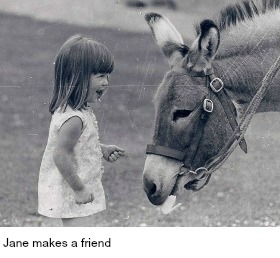
Perhaps what I am describing here is a Feeling wound that started with my family. Paradoxically, my parents both appear to be dominant Feeling types, my mother displaying ENFJ characteristics, therefore extraverted feeling dominant, and my father assessing as an INFP like me. However, their upbringing did not value Feeling. They grew up in Northern Ireland in Protestant families in which the Puritanical heritage valued Thinking and Sensing more highly than Feeling and Intuiting. Arguably, Protestant Northern Irish are known for their tidy houses and gardens; stereotypically they value order above expressive art and are practical, reserved, and pragmatic. These qualities suggest that as a culture, they might express the ISTJ type, meaning introverted sensing and extraverted thinking are valued. Historically, the doctors and accountants of Northern Ireland have come primarily from this Protestant sub-culture. If this logic holds, then my parents would have been strongly encouraged to develop their Thinking functions in order to have better opportunities in the more socially-enabling professions. They would have been discouraged from expressing artistic qualities of Feeling and of Intuiting, these being seen as lesser qualities. These societal pressures seem to have been reinforced towards me and my siblings. My siblings assess as thinking types, INTJ and ENTJ, so were not so adversely affected, but it seems the expression of my innate type was distorted. Von Franz (1971) said that people can revert to original type through analysis “like fish that can now return happily to the water” (p. 12), and I believe this happened to me through various therapeutic practices. Through psychotherapy, craniosacral therapy, and Jungian analysis, I believe I have returned to the water.
My father and I have an easy relationship, both having superior introverted feeling. Despite any distortions in our type expression, the innate characteristics have connected. We bond over the garden, nature in general, and our evaluation of situations. I witness the sometimes-clumsy interactions due to my family’s different types and often need to remind myself of von Franz’s (1971) sentiment that although Thinking types are often seen as not having any feeling, “this is absolutely not true. It is not that they have no feeling, but that they cannot express it at the appropriate moment. They have the feeling somehow and somewhere, but not just when they ought to produce it” (p. 21). Perhaps if everyone were able to be more conscious of each other’s Feeling function position, then many of the miscommunications I see would not happen.
The Feeling function can be expressed through an either introverted (Fi) or extraverted (Fe) attitude, and they are quite different. Introverted feeling tends to focus on one’s own values whereas extraverted feeling focuses on the feelings of others. My Feeling is expressed through an introverted attitude while my mother’s is through an extraverted attitude. While we have a close loving relationship, our dominant function difference does not always lead to harmonious communication. Jung, von Franz, and Beebe have each observed that individuals having preferences for the same function but in opposite attitudes can experience conflict and disharmony since the shadow functions are difficult to see in oneself. So despite my mother being a Feeling type, she may not have recognized my introverted feeling, nor I her extraverted feeling.
The ego-dystonic functions tend to operate under the archetypes of what Beebe termed the Opposing Personality (5th), Witch/ Senex (6th), Trickster (7th), and the Demonic personality (8th). These are ego-dystonic in that they are not in harmony with the ego’s conscious, usual way of being. By looking at these archetypal forces underlying the psychological types, it is possible to gain better understanding into how we relate to our own psyche—the tensions between our conscious and unconscious minds—as well as how we relate to the world and its people around us. In Beebe’s model, Fe falls in my Opposing Personality position, and my mother’s Fi sits in her Opposing Personality position. While my mother might have been concerned with gathering people together for group harmony, we sometimes missed that our values did not fit with each other’s needs. It can be easy to feel judged when our preferred functions are misread. Jung (1921) compared the Fi type to the mimosa plant that withdraws at the slightest external touch. And so I withdrew easily from other’s judging, not wanting to share my private value system that is typically not up for discussion, a common Fi response (Haas & Hunziker, 2006, p. 106). Von Franz (1971) explained that for Feeling types, often “the real thought is not yet up to the level at which it can be expressed” (p. 22). This so accurately describes my interior world that I commonly find myself in tears with frustration at not being able to express my inner feelings. On many occasions, my poor mother has been on the receiving end of the “unadaptedness and primitiveness” of my inferior Te through “its touchiness and tyranny” (p. 18). But von Franz’s comment reassures me that I am not alone in this behavior.
I spent years working in business and finance using my extraverted thinking and introverted sensing functions, keeping the Fi suppressed. It was not until aged 34 that I moved out of this corporate Sensing and Thinking field to become a craniosacral therapist. Craniosacral therapy is a therapeutic practice in which the practitioner attunes the rhythms of the body to the rhythms of the natural world. My observation tells me that the practice involves Feeling, Intuiting, and Sensing, with little Thinking. We feel “other peoples’ pain” (Haas & Hunziker, 2006, p. 70), we “have sensitivity to others’ inner calmness” (p. 106), and we are “closely attuned to the physical condition and energy of their bodies” (p. 43). While a largely introverted practice, craniosacral therapy does require some extraverted functions, such as Fe in order to empathize with the client or Ne to gather lots of information to assess the big picture. My immersion in this field, I believe, served to right my Fi—Te axis, in that my introverted feeling was able to once more take its rightful place as my superior function. I also brought consciousness to my Ni that is positioned as the negative mother in Beebe’s model, as well as my Fe, thus resolving some of the communication challenges with my actual mother.
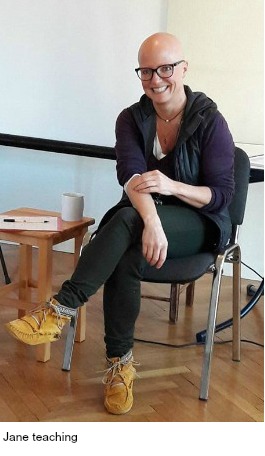
Now that I have brought my own psychological type dynamic into better balance and so can better relate to myself, my challenge then is to bring Feeling consciousness to my relating to others around me, including to friends and family, but also to those I teach. I teach people to become craniosacral therapy practitioners through a two-year training program as well as by running my own workshops. Both essentially teach participants to feel the world around them, including the natural world. While it is important not to restrict my students through definitive type categorization, I think it is useful to understand their psychological types as described by Jung and Beebe. Indeed, if I were to teach in a way that is overly concrete, then I would be literalizing what it is I am trying to teach and moving away from the archetypal affect. However, it is important to support my students to differentiate how they perceive and evaluate the world, allowing them to work it out for themselves. Unlike in my own type-distorting experience, I try to invite my students to explore how it is they experience the world and only offer some simple framing as feedback. No doubt there are particular types that gravitate to the cranial field, but it is important that their learning exploration is fluid, regardless of their type.
Further, if I were to push them to use an inferior or shadow function such as Opposing or Demonic personality, it might result in destabilizing the personality, potentially towards depression, mania, paranoia, or schizophrenia, as described by Sandner and Beebe (1995, p. 328). They warned that all therapists “working with the unconscious should be ever alert to the dangers of activating the demonic layer of the personality with injudicious interventions” (p. 330). Using the lens of my students’ psychological types as I embark on the teaching process will likely result in a more harmonious journey for all of us. Understanding all eight functions when in a therapeutic relationship is vital since a light can be shone onto the archetypal affect exhibited by the patient through an appreciation of his or her psychological type.
Examining this through the psychological types lens of Beebe’s archetypal model, I am potentially teaching people to become conscious of their shadow and inferior functions. I work with others to develop their Feeling functions through teaching them to feel the world around them. One program I run works specifically to teach people to relate to the earth and natural world. I ask my clients to notice how a plant makes them feel, where it feels most comfortable to sit in relation to another person, or in a garden. I invite my clients to ask themselves: How do you feel? How does the plant feel? How does the other person feel? I ask them not to enquire of the name of the person or tree, rather to just feel. I ask them to pay attention to the functions of Intuiting and Sensing. I describe how, for example, I feel the rose or another person in a therapeutic setting. I might sense in my body how that person is feeling, I might notice particular colors and densities in that person, or I might hear an imaginary sound or vibration. This also applies to a flower or tree or animal or even to the rock or chair that I might be sitting on. So I invite exploration of functions.
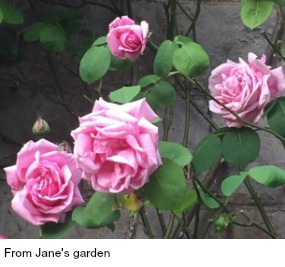
Feeling needs to become more conscious in our culture in order to balance the collective, in the same way that my own personal set of functions needed to be rebalanced to allow me to better relate to the world around me. I have become accepting of my way of being in the world, learning that Feeling is not only acceptable but also valuable. The falling apart of my body and hair made me take particular notice, and I wonder if the current apparent falling apart of society will similarly affect a shift in the collective Feeling consciousness.
References
Beebe, J. (2004). Understanding consciousness through the theory of psychological types. In J. Cambray, and L. Carter (Eds.), Analytical psychology: Contemporary perspectives in Jungian analysis (pp. 83-115). Hove, UK: Brunner-Routledge.
Beebe, J. (2005). Evolving the eight-function model. Australian Psychological Types Bulletin, Winter, 2005, 34-39. (Reprint 2006, Australian Psychological Types Review 8(1), 39-43.
Haas, L. & Hunziker, M. (2006). Building blocks of personality type: A guide to using the eight-process model of personality type. Temecula, CA: Typelabs.
Hillman, J. & von Franz, M-L. (2013). Lectures on Jung’s typology. Dallas, TX: Spring Publications. (Original work published 1971).
Jacobi, J. (1971). Complex, archetype, symbol in the psychology of C. G. Jung. New York, NY: Princeton University Press.
Jung, C. G. (2014). Definitions. In R. F. C. Hull (Trans.), Psychological types (Vol. 6, pp. 408-486). London, UK: Routledge. (Original work published 1921).
Jung, C. G. (2014). General description of the types. In R. F. C. Hull (Trans.), Psychological types (Vol. 6, pp. 330-407). London, UK: Routledge. (Original work published 1921).
Myers, I. B. with Myers, P. B. (1995). Gifts differing: Understanding personality type. Mountain View, CA: CPP. (Original work published in 1980).
Sandner, D. & Beebe, J. (1995). The role of psychological type in possession from Psychopathology and analysis. In M. Stein (Ed.), Jungian analysis, (2nd ed., pp. 322-330). Chicago, IL: Open Court.
Images:
Martin Johnson Heade, “Apple Blossoms,” (1878).
Jane and friend. Courtesy: Jane Shaw.
Jane Shaw. Courtesy: Jane Shaw.
From Jane’s garden. Courtesy: Jane Shaw.







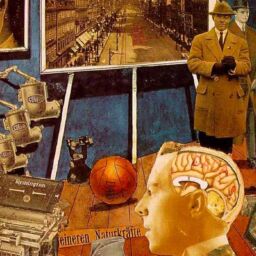


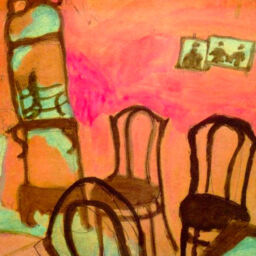

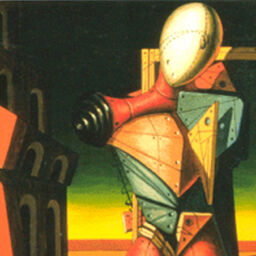

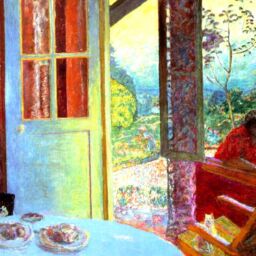
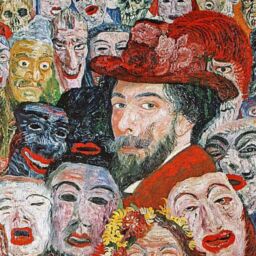
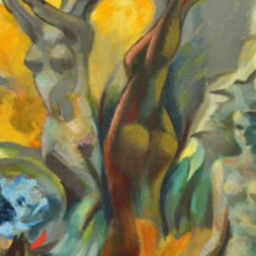

Carol, thank you. Yes I would love to write an article.
Phil, this is a lovely comment on a lovely article. Thank you for sharing your story. You write beautifully (perhaps that is one positive outcome of those years of solitude). Would you like to write an article for us? I’m sure you have more to share.
I love this article and have read it several times over the years. Allow me to briefly relate my story.
I became interested in typology over a decade ago, in my early 20s. For all of my life it appeared I was an introverted thinker and was universally regarded by others as one might regard an INTP. However, my inner world was fraught with turmoil and tempestuous feelings that I had to keep in check behind a stoic façade. My adolescent school years were beset with daily tension headaches and an incapacity to relate to the opposite sex romantically, however communicatively we could speak at great depth and understanding about social dynamics.
My father is a thinking type operating his own business in technical writing, however he has no academic background. His early intimations of wanting to become a physicist were then projected on me, the first-born, an end I pursued into college until life derailed my aspirations with such persistence that I abandoned pursuing it altogether. I became more interested in social sciences, political science, economics, and psychology. I wanted to understand the large scale themes of what make people tick and how it manifests in society at large. A span from the individual to the collective.
However, I was unable to shake the analytical bent bestowed upon me, to shake the Ti from the Hero role it had assumed back into its proper place, until I was 27 and had a spontaneous spiritual awakening. Ti had reached the end of its reasoning, became deadlocked in catatonia, and was then shattered when pressed against the option of either persisting in this analytical paradigm where nothing could be decided, or obliterating it to give rise to a rebirth. Since the former meant certain death, the latter was enacted spontaneously, leading to the most bewildering three months of my life that could only be crudely described as manic psychosis, culminating in an abject physical crisis through which I only survived by a miracle.
As I now understand it, at 34, the moment of awakening was the moment where extraverted feeling properly assumed its role as the Hero, something it had been denied for over 25 years. Suddenly shifting from a Ti paradigm to an Fe paradigm simultaneously brought tremendous illumination and also great confusion – my usual tools were of no use here. I had to relinquish myself entirely to introverted intuition and trust that whatever it showed me would be the correct path. While there was a great preponderance of insight, there were also injunctions so incomprehensible to my thinking-attuned mind that I struggled to comply. Non-compliance brought about extreme disharmony and chaos, something I always sought to avoid via thinking means, but now I was required to comply via trust in my feelings. This confusion ultimately led to my near demise.
Now, 7 years after that original event, it has become clear that I am ENFJ, not INTP, nor the ISTP I so highly admired and embodied as a youth. A serious chink in the armor came around 2017 when my EEG scan with Dario Nardi indicated that I indeed lead with a J function, but that function was extraverted and was not thinking! At the time I had thoughts that INFJ with a highly activated puerile Ti was the best fit. It would take 5 more years to realize that my objective orientation is far too predominant.
Since embodying this resonant aspect I have found my life actualizing in transcendental ways. There is a natural flow of energy that catalyzes the people I interact with. No longer is this dependent upon analytical discourse, it happens through every interaction, from the simple to the profound, by means of felt presence and experiential relating. Recalling Hillman’s stages of the feeling function, having dismantled the scaffold of thinking which had been limiting the feeling expression, uninhibited I pursue avenues of connection thinking wouldn’t imagine in its wildest dreams – and this leads to transcendental interactions.
More generally, recalling Jung’s frequent lamentations about the state of morality in modern society, which has become so obsessed with reason and logic, this cultural falsification of the feeling function is perilous indeed. We are more likely to destroy ourselves by our technical advancement than we are to save ourselves. Our cultural intellectual hubris has so outweighed our moral sensitivities that we are doomed to commit atrocities on such a large scale that the Holocaust would be but a blip on the radar. Perhaps a precursor at best.
How do we reorient toward integration of the feeling function in society? Through my limited means, I engage this affect in every interaction as fastidiously as possible, to mobilize and awaken the other to their own confidence in that realm of being which we all feel is true. To inspire through simple force of character such that the other recognizes that if I am so confident in my orientation then there must be some anchor of truth behind it and hopefully inquires about its source. This perseverance enacts transformation in the environment, but it bears a double-edged sword, for to be wrong would mean misleading others through guile and deceit toward demeritorious ends.
Perhaps some degree of my introverted isolation for the vast majority of my life was due to this particular fear. Perhaps it was necessary, given the circumstances, to invert in order to purge whatever misalignment might then come forth upon expression. To reconcile myself with myself and my truth. So in a sense I have become a geode. An implacable outer armor protects an inner crystalline palace and in the center of it all is the open space of receptivity. Thus, while diplomatic, my presentation may be rough at times, but it is in order to generate actualization towards truth. If that is accepted, then one breaks through the shell and experiences the tremendous array of internal glory, the very glory I endeavor to awaken in others.
Thank you very much!
As a note to JJ Baruch: the focus on introversion vs extraversion is very strongly Jungian — and I really mean here Jung, as existing prior to John Beebe’s, Isabel Myers’, and many others’ takes on type.
A huge portion of Psychological Types involves a discussion of introverts and extraverts, without even mention of the psychological function through which they are expressing the dominant attitude.
So much so that from Jung’s point of view, it was fine to say the top two functions were deployed in the same attitude: for instance, Nietzsche deployed dominant introverted intuition as well as secondary introverted thinking, with comparably inferior feeling and sensation, in Jung’s assessment.
All this meant was that the attitude of ego-consciousness is one or the other: introversion or extraversion, and all differentiated functions are deployed that way.
This idea has largely been revised in a lot of the type community following the Myers’ development of the MBTI, and many of these view the top two as occurring in opposite attitudes; however, the *spirit* of the strong focus on introversion/extraversion is indeed preserved in John Beebe’s model, where the shadow functions are precisely the opposite function-attitudes to the main four.
It should be noted that Jung’s notion of introversion/extraversion is not quite the same as what is presented on type tests like the MBTI. It seems like the evidence is pretty clear that introversion/extraversion as captured by the psychometric instrument in the MBTI is tapping into the corresponding Big 5 Factor I. Jung’s introverts would probably fit more in the interface of Factors I and V(-I/+V to be precise) than purely in one.
(I myself like the more esoteric theories, but that is purely my inclination/not a comment on usefulness, which to me is secondary, and since you bring up temperament and so on, and given accuracy-wise, there are some merits to these data-driven theories, and I figured this information may be helpful.)
Personally, I hesitate in how much I’m willing to map the MBTI tool to things like Fi and Fe, because the truth is MBTI seems to be based on a linear model with four dimensions. This means that, while an association between FJ and Fe/FP and Fi may be a priori reasonable, it remains that by the logic of a linear model, TP and FP differ precisely by the one letter. It does NOT lend itself to the interpretation that TP associates to something called Ti, which should relegate Fi to the shadow. The idea that a TJ and FP in some sense “share” non-shadow functions Te and Fi and that TP and FP don’t just doesn’t make sense to draw from such a model where you basically have 4 independent dimensions: hence why it seems to me the MBTI maps better to four of the five factors of the Big 5 than to Jungian interpretations.
In any case, to the OP — Hillman’s take on the feeling function is one of my favorites, and I completely agree the feeling function is wounded in society. Part of the reason to this is society is, after all, a practical enterprise designed to offer some shared benefits, and thus I’d say if anything, a sensation/thinking orientation has a lot of advantages in greasing the wheels and keeping the machine running.
(This isn’t to say these functions can’t be employed in subtler ways, of course they can — it’s just to say they can and are often employed in the spirit of a kind of brute practicality.)
The other issue is probably that much of the world runs on the idea that feeling and raw emotion are more or less the same. It isn’t hard to dismantle this idea, but it does take an observation: that our rational faculties can literally change our subjective reactions to things. That in and of itself demonstrates that we are capable of asking whether a reaction was appropriate, and underscores why the feeling function is rational.
If not, it would simply produce raw reactions, ones which cannot be modified based on our questioning their mutual coherency.
I have often found that it is considered more practical to simply agree to disagree where questions of feeling are concerned — that would only be true if all feeling amounted to were, say, akin to a visceral hatred of a food (that is, heavily reducible to sensation), where no rhyme or reason really is appropriate.
There is no question that the thinking function is more *explicit*, and thus it is a little easier to resolve disputes in that department, but this still should not lead to just giving up, or about as bad, simply adopting collective norms.
Note to JJ Baruch: I am delighted to find an ISFP in our readership. I find that these types can be among the most observant about type, although most are not academics (like you) and so many type practitioners are unaware of their abilities. You are not alone in having had to create a false self to operate in the world..
Re your remarks that “I am fascinated and puzzled by the greater focus on introversion and extroversion in everything I read” and “It’s the open perspective vs the reduced or center view perspective I find with nearly all ‘J’s that is my biggest challenge.” As co-editor I’d like to address these points on J and P so as not to leave your post hanging unanswered, although I cannot answer it personally for the author.
Speaking only for myself, if came as a huge revelation to me to discover the eight-function model and to realize how very different the introverted and extraverted attitudes of the functions are. I had been using type professionally for years but I did not know the difference between Se and Si, for instance, although Jung’s schema is based on this difference. That’s why I started this journal, so I’m glad to have the chance to talk about it.
“J” and “P” definitely have value and all credit goes to Myers and Briggs for discovering this ‘closure vs. openness’ opposition in the type chart. This may indeed by a considerable source of conflict, but Von Franz and Jung both observed that the greatest potential source of interpersonal conflict comes from the people with the same function but in opposite attitudes, i.e., Fi vs. Fe, which is Jane’s case as INFP vis a vis her mother ENFJ. One could say this is just another way of stating the opposition of P to J, but to focus only on the extraverted functions (which is what J and P refer to) misses the real meaning of how Fi differs from Fe. They differ in more ways than just seeking openness or closure. To give just one example, Fi is about internal harmony while Fe is concerned for group harmony; Fi seeks authenticity above all, whereas Fe seeks connectedness above all, etc. And if we use only J and P to evaluate conflict, we can miss a lot of other potential reasons for conflict. For instance, if an ENFP and an INFP have conflict, we have to know more than J and P. We have to understand that they use Fi very differently. Position makes a big difference in how a function is used. For instance, it can help to understand that the INFP’s 3rd function, Si, is the inferior function for the ENFP, and vice versa so they can inadvertently trigger an animus reaction in each other. Perhaps you already know all this. If so, please forgive my preachiness. And thank you for your comments.
Louise, go to the Terms & Theory screen (at upper right hand corner of this screen) and scroll down until you see the colored Eight-Function Chart of Sixteen Types. This is the chart of the Beebe model. Then look for your type to find out which functions are in the Trickster position, the Demonic position, etc. Of course, you have to know your type.
In order to get clarity on your type and to learn more about the eight-function model, I recommend either or both of my co-editor’s books on the eight-function model: Hunziker’s Building Blocks of Psychological Type—I require this book in my class at Pacifica—and his recent Depth Typology:The guide map to becoming who we are. In addition, Bob McAlpine has a short book on Type and the Eight Functions published by CPP.
Carol Shumate, Publisher and co-editor, Personality Type in Depth
Thank you for this post. I am 9 months into my Jungian analysis and my therapist and I have been discussing my functions. (I also read the book of Von Franz and Hillman.) Because of trauma in childhood it is tricky to see where I belong since different functions have been used to survive. As you also talk about. My therapist is pretty convinced I am FI as well where as I thought I was either introverted Intuitive or extroverted Feeling. It’s taking me some time to really understand the functions. I too suffer from a lot of physical illnesses/symptoms that I am trying to find healing for in all kinds of ways.
I am curious to understand if the model posted with the shadow sides (trickster, demon etc) is just for FI or how to understand it? I think it could be beneficial to me to get familiar with these terms and perhaps talk to my therapist about them since some of the Archetypes activated in my life have some of the traits one would associate with the titles (demon, trickster…)
Thank you!
HI Jane,
I stand corrected typo – anima – not animus.
I was thinking across genders….
Sorry
Hi Jane,
Your article is fascinating and your progress along our different journeys.
Just to say briefly, that my last time in UK, was in Ballymena 2004-5.
Born in N.Yorkshire now living in Lapland, Sweden – retired or going retarded, i.e. my brain seems very active in my explorations in Jung and my belief (Christian).
I found your explanations of the 8 functions require another reading, and that applied to yourself but you explained them to myself as a lay Jungian, they where your own.
I have two sons, one 21 Rory gifted in music and who I would cherish if he took this up in Ireland, his two instruments Violin and Mandolin. My youngest 15 Luke – a challenge.
Reading your article helped me with the latter in seeing how I may not see myself.
I liked to your explanation regarding – rose(s). I steel from Shakespeare and say – A rose is a rose and by no other name, a rose. I cannot remember what my first 3 years were but traumatic, mother very ill and felt things that then were needy as my mother was not there to do as mothers do to draw their children out. It is a dark mystery but left me with unsure what Jung would say – perhaps Complex but Freud would relate more direct. I would like more about your training, etc. I relate more to the Si function, as it made a impression on me before 3, that the shadow reminds me of in stress. In short, when feeling fearful (was then at 3 yrs old), I act out an experience from that time. Other than being in Analysis, unlikely – it has been very much – my ‘shadow play’, through my life. I know it to be the ‘trickster’. How can I even try to explain. I pray you understand as I just felt needed to answer, but saw that you are Therapist for women. Must be my Animus in me that needed to find meaning.
PS: I did not understand when you put a ‘J’ after the function type.
I truly enjoyed reading your article and found several aspects of your experience reflective of my own in spite of the fact I am an ISFP who had to adapt and develop as a pseudo ESTP in order to survive the environment I was born into. I am not an academic, so please forgive my lack of Jungian psychology background knowledge. My limited understanding and interests have been toward temperament orientation since first being introduced to Meyers-Briggs and Keirsey models some 15 years ago.
For me, Sensory orientation and Perceiving determination processes were for the most part non-negotiable in my early life development. During the first two decades of life I also acquired an apparent Judging determinant orientation,(for that was the dominant environmental perspective) though my true perceiving perspective constantly clashed with those definitive ‘J’ conclusions; even those I had arrived at myself.
What was most difficult was the near total repression of my feeling self and the alternate development of my thinking processes; developed to such a degree that I test equally as an TP and FP with MB and Keirsey instruments.
Like you I have previously functioned in business roles as a ‘false self’; in my case doing up until the point complete mental/emotional collapse requiring years of recovery, discovery and re-acquisition of my true lost self. which brings me to a question that you might have insight and or opinion on.
When you mention your ability to function in typical Ne behavior while “speaking from the heart” – I relate to having acquired an ability to function contrary to my true temp-type preferences and it brings a few thoughts and questions to my mind.
1) Do you feel that you gain positive intake in that extroverted role?
I myself sense the lack of positive intake when functioning ‘as if’ an extrovert. Though I can stand before a group of architects and ‘perform’ an extroverted consulting role quite well, it drains me to do so.
2) Might it be the “speaking from the heart” element (incorporating your feeling and perceiving elements) that actually feeds your true type need and compensates for the ‘outside of type’ extroverted functioning part of that process?
3) Can you sustain altered type functioning (not specifically in line with your true self, or only partially in line with your true self) consistently or repeatedly; or is it more of a occasional process that is ‘doable’ only in limited amounts?
4) Is your present career, for you, noticeably more fulfilling and feel like a much ‘better fit’ that your previous roles? Is it more natural and therefore sustainable?
5) Lastly, and please forgive my lack of education with regard to Beebe, Jung and others; I am fascinated and puzzled by the greater focus on introversion and extroversion in everything I read. For to me and in my albeit limited 15 years of interaction and observation with various individuals who have identified their temperament type; it is the J and P factor as much if not more directive within the temperament type matrix. Both of your parents were N-F’s yet it was the I-P parent rather than the E-J parent you felt an easier connectivity with.
Could it not be the broad band perception of the perceiver that was more of a factor than the more definitive perspective of the judger?
for me, it’s easier to relate with extroverts (being an introvert) than it is to relate with ‘J’s as I am a ‘P’. It’s the open perspective vs the reduced or center view perspective I find with nearly all ‘J’s that is my biggest challenge.
Again, I appreciated your article and hope to read more of your work. I suppose that were you an F-J, as opposed to an F-P, the imparted value of your feeling processing might be more binary as Hillman proposes. Your F-P nature offers a much more layered and diverse perception and I appreciate your insights as a result. I find your description of the nuanced processing afforded through your feeling matrix most validating and insightful; as you add the additional perspective of a developed thinking lens toward the greater resolution of your intuitive feeling viewpoint.